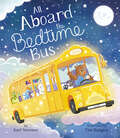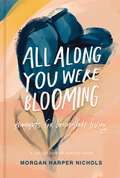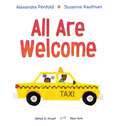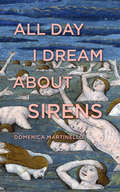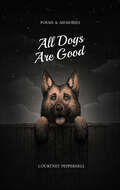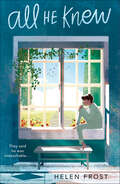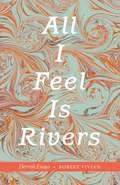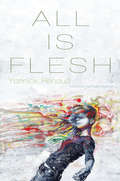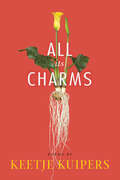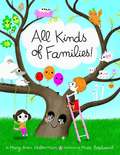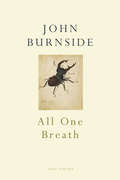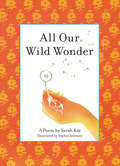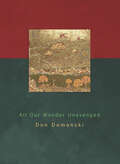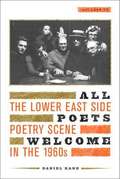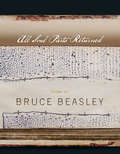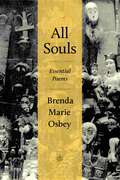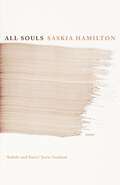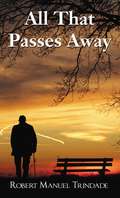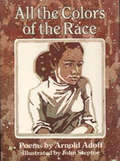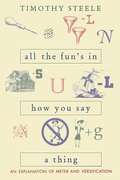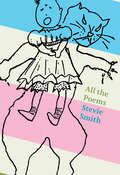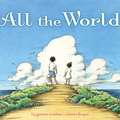- Table View
- List View
All Aboard the Bedtime Bus
by Karl NewsonFollow along with the animals on the bedtime bus as they brush teeth, take a bath, put on pajamas, and read a bedtime story in this rhyming bedtime book.Children can join the bus driver and all his sleepy passengers as they go on a magical bus trip to bedtime. Watch them travel from stop to stop on the bedtime bus as they brush their teeth at Snoozyville, put on their pajamas at Slumber Town, and read bedtime stories at Sleepy Land. And when the bedtime bus reaches its destination and the engine stops and the lights turn off, the adorable animal friends snuggle up to sleep.
All Along You Were Blooming: Thoughts for Boundless Living
by Morgan Harper NicholsA celebration of hope. An encounter with grace. A restoration of the heart. A healing of wounds. An anthem of freedom. All Along You Were Blooming is the ultimate love letter from the pen of popular Instagram poet Morgan Harper Nichols to your mind, to your heart, to your soul, and to your body.Morgan Harper Nichols delivers a striking collection of illustrated poetry and prose, inviting you to "stumble into the sunlight" and delight in the wild and boundless grace you've been given. There is a purpose in every season, and no matter how you want to race through this day or run away from this place, rest assured that you are invited to live fully—right here, right now. Light will always find you, and even when the sun sets and you sit awaiting the dawn, know you are still blooming in the way you were meant to. And in each small moment, whether in the light or the dark, you can make room for becoming, for breathing, for stumbling, and for simply being—for there is Grace, today and every day.
All Are Welcome
by Alexandra PenfoldIllustrations and simple, rhyming text introduce a school where diversity is celebrated and songs, stories, and talents are shared. <p> <b>New York Times Bestseller</b>
All Day I Dream About Sirens
by Domenica MartinelloFrom Homer to Starbucks, a look at sirens and mermaids and feminism and consumerism. <P><P> What started as a small sequence of poems about the Starbucks logo grew to monstrous proportions after the poet fell under a siren spell herself. All Day I Dream About Sirens is both an ancient reverie and a screen-induced stupor as these poems reckon with the enduring cultural fascination with siren and mermaid narratives as they span geographies, economies, and generations, chronicling and reconfiguring the male-centered epic and women's bodies and subjectivities.
All Dogs Are Good: Poems & Memories
by Courtney PeppernellWritten for anyone who has known the touch of a cold nose on their hand, the bark of a best friend, or the joy of a walk accompanied by a wagging tail, All Dogs Are Good pays tribute to the special bond we share with our canine companions.Filled with heartfelt poems and prose on the love, dedication, and laughter our dogs bring, as well as the unique lessons they teach us along the way, bestselling author Courtney Peppernellís vignettes of life with our dogs are a touching reminder of the gifts they give us during their journey on earth. Celebrating dogs everywhere, All Dogs Are Good is a collection dog lovers will hold in their hearts forever.
All He Knew
by Helen FrostA 2021 Scott O'Dell Award WinnerA Society of Midland Authors Winner in Children's FictionA Bank Street Best Book of the Year 2021A novel in verse about a young deaf boy during World War II, the sister who loves him, and the conscientious objector who helps him. Inspired by true events.Henry has been deaf from an early age—he is intelligent and aware of langauge, but by age six, he has decided it's not safe to speak to strangers. When the time comes for him to start school, he is labeled "unteachable." Because his family has very little money, his parents and older sister, Molly, feel powerless to help him. Henry is sent to Riverview, a bleak institution where he is misunderstood, underestimated, and harshly treated.Victor, a conscientious objector to World War II, is part of a Civilian Public Service program offered as an alternative to the draft. In 1942, he arrives at Riverview to serve as an attendant and quickly sees that Henry is far from unteachable—he is brave, clever, and sometimes mischievous. In Victor's care, Henry begins to see how things can change for the better. Heartbreaking and ultimately hopeful, Helen Frost's All He Knew is inspired by true events and provides sharp insight into a little-known element of history.
All I Feel Is Rivers: Dervish Essays
by Robert VivianAll I Feel is Rivers is a collection of a new hybrid writing that, though spiritually akin to prose poems, retains an essayistic form. After several life-changing trips to Turkey, Robert Vivian took up a deep study of Rumi, the thirteenth-century Sufi mystic, poet, and founder of the religious order that performs the now-famous dervish dance. Vivian&’s fascination seeped into his writing, and his newly conceived dervish essays reflect the dynamic movement and ancient symbolism of the ritual dance with wild lyricism, sometimes breathless cadences, and mesmerizing unspooling. Utterly fearless in their passionate avowals of life&’s many manifestations, these essays showcase the surprising connectivity between the sacred and profane, uncovered by associative drifting. Vivian&’s essays take on grief and loss, the natural world and climate, spirituality and ecstasy, all while pushing the boundaries of what prose can do.
All Is Flesh
by Hugh Hazelton Yannick RenaudAll Is Flesh collects in one volume Hugh Hazelton's English translations of Yannick Renaud's brilliant first two books of poems, Taxidermy and The Disappearance of Ideas, first published by Éditions Les Herbes rouges in Montreal.Taxidermy is a discourse on time consisting of prose poems stretched to the very limits of detachment. A completely objectified couple, alternately speaking as simply "he" or "she," strive to attain perfect control over their physical movements. Slowing them down, even stopping them, is equivalent in their minds to seizing and savouring the essence of the present and, by extension, to stopping time in their lives-an enactment of the romantic aesthetics of Keats's "Ode on a Grecian Urn." Their attempts at "holding the pose," as much for themselves as for each other, generate a tension in their voices-at once demanding, yearning and confessional-between the need for both static form and fluid movement in the choreography of their lives, which seeks to "occupy space unequivocally."The Disappearance of Ideas is a meditation on time that interrogates death and mourning, reminding us that "death remains the privilege of the living" and that "cathedrals tell us nothing more than the time on their stones." Unsentimental and intellectualized, the poems generate their radiant intensity by drawing our attention to the part of mourning that remains unresolved and inaccessible in our memories, reminding us of "what we don't know of stories." But this absence, what remains unknown of the past to us, also haunts our futures, where "actions taken only hinder what should have been," and "there is no second chance." As Baudrillard has said: "Things live only on the basis of their disappearance, and, if one wishes to interpret them with entire lucidity, one must do so as a function of their disappearance."
All Its Charms (American Poets Continuum #171)
by Keetje KuipersA luminous new collection from Keetje Kuipers, All Its Charms is a fearless and transformative reckoning of identity. By turns tender and raw, these poems chronicle Kuipers’ decision to become a single mother by choice, her marriage to the woman she first fell in love with more than a decade before giving birth to her daughter, and her family’s struggle to bring another child into their lives. All Its Charms is about much more than the reinvention of the American family—it’s about transformation, desire, and who we can become when we move past who we thought we would be.
All Kinds of Families!
by Mary Ann Hoberman Marc BoutavantWith irresistible, rollicking rhyme, beloved picture book author Mary Ann Hoberman shows readers that families, large and small, are all around us. From celery stalks to bottle caps, buttons, and rings, the objects we group together form families, just like the ones we are a part of. And, as we grow up, our families grow, too. Mary Ann Hoberman gives readers a sense of belonging in this all-inclusive celebration of families and our role in them.
All Odd and Splendid: Poems
by Hilda RazThis collection of poems is an exploration of lives and selves transformed by choice and by chance. Formally and thematically diverse, these poems are testament to the will to redefine oneself in a world of constant, and often painful, change. Beginning intimately with poems of personal examination and moving gradually to the world of shared experience, Hilda Raz rethinks the structures of family and community while examining the impact of loss and growth. All Odd and Splendid takes its title from a quotation attributed to Diane Arbus, the American photographer known for her portraits. Raz's poems share Arbus's steadfast celebration of the strangeness in the ordinary, bringing us into contact with a beauty and pain that are inseparable when we see things as they truly are.
All One Breath
by John BurnsideShortlisted for the 2014 T.S. Eliot Prize and the Forward Prize for Best Collection‘There are lines in All One Breath for instance, that brand themselves into your brain with the fire of painful recognition. And yet it is also part of his genius to be ever alert to beauty, too.’ - Sebastian Barry, a New Statesman Book of the YearIn this absorbing, brilliant new collection – his first since Black Cat Bone – John Burnside examines our shared experience of this mortal world: how we are ‘all one breath’ and – with that breath – how we must strive towards the harmony of choir. Recognising that our attitudes to other creatures – human and non-human – cause too much damage and hurt, that ‘we’ve been going at this for years: / a steady delete / of anything that tells us what we are’, these poems celebrate the fleeting, charged moments where, through measured and gracious encounters with other lives, we find our true selves, and bring some brief, insubstantial goodness and beauty into being. He presents the world in a series of still lifes, in tableaux vivants and tableaux morts, in laboratory tests, anatomy lessons, in a Spiegelkabinett where the reflections in the mirrors, distorted as they seem, reveal buried truths. All the images are in some sense self-portraits: all are, in some way, elegies.One of the finest and most celebrated lyric poets at work today, John Burnside is a master of the moment – when the frames of our film seem to slow and stop and a life slips through the gap in between – and each poem here is a perfect, uncanny hymn to humanity, set down ‘to tell the lives of others’.
All Our Wild Wonder
by Sarah KayFrom renowned poet Sarah Kay, a single volume poem perfect for teachers and mentors.All Our Wild Wonder is a vibrant tribute to extraordinary educators and a celebration of learning. The perfect gift for the mentors in our lives, this charming, illustrated poem reminds us of the beauty in, and importance of, cultivating curiosity, creativity, and confidence in others.
All Our Wonder Unavenged
by Don DomanskiA poet of osmosis explores the implicit relationship between matter and spirit, the interconnectedness of the universe.In his first full-length collection since 1998's Parish of the Psychic Moon, Don Domanski writes with clarity of vision. He is a poet of the holiness of subtleties, a master of mindfulness and being. His writing is a form of osmosis, spirit seeping through the details of each poem, creating a marvel of metaphysics and language distilled to purest energy. Living in the moment here is synonymous with being the moment, a transformation that is stunning to inhabit.
All Poets Welcome: The Lower East Side Poetry Scene in the 1960s
by Daniel KaneThis landmark book captures the heady excitement of the vibrant, irreverent poetry scene of New York's Lower East Side in the 1960s. Drawing from personal interviews with many of the participants, from unpublished letters, and from rare sound recordings, Daniel Kane brings together for the first time the people, political events, and poetic roots that coalesced into a highly influential community. From the poetry-reading venues of the early sixties, such as those at the Les Deux MÉgots and Le Metro coffeehouses to The Poetry Project at St. Mark's Church, a vital forum for poets to this day, Kane traces the history of this literary renaissance, showing how it was born from a culture of publicly performed poetry. The Lower East Side in the sixties proved foundational in American verse culture, a defining era for the artistic and political avant-garde. The Lower East Side's cafes, coffeehouses, and salons brought together poets of various aesthetic sensibilities, including writers associated with the so-called New York School, Beats, Black Mountain, Deep Image, San Francisco Renaissance, Umbra, and others. Kane shows that the significance for literary history of this loosely defined community of poets and artists lies in part in its reclaiming an orally centered poetic tradition, adapted specifically to open up the possibilities for an aesthetically daring, playful poetics and a politics of joy and resistance.
All Soul Parts Returned (American Poets Continuum)
by Bruce BeasleyWhen the Gnostic Gospels collide with new age spiritualism, the Oxford Happiness Test, and treatises on Buddhist practice, we know we're in the territory of a Bruce Beasley collection. Alternately devout and heretical, Beasley-known for his intense and continuing soul-quest through previous award-winning books-interrogates the absurdities, psychic violence, and spiritual condition of twenty-first century America with despair, philosophic intelligence, and piercing humor.Bruce Beasley is the author of eight collections of poetry, including Theophobia (BOA, 2012). The winner of numerous literary awards and fellowships, he lives in Bellingham, WA, where he is a professor of English at Western Washington University.
All Souls: Essential Poems
by Brenda Marie OsbeyAll Souls: Essential Poems brings together work that reflects the interweaving of history, memory, and the indelible bonds between living and dead that has marked the output of Louisiana Poet Laureate Emerita Brenda Marie Osbey. Comprising poems written and published over the span of four decades, this thematic collection highlights the unity of Osbey's voice and narrative intent. The six sections of the book reveal the breadth of her poetic vision. The first, "House in the Faubourg," contains poems focused on the people and places of Osbey's native New Orleans, and the penultimate section, "Unfinished Coffees," examines the Crescent City within a broader, more contemporary meditation on culture. "Something about Trains" features two suites of poems that use trains and railway stations as settings from which to inspect desolation, writing, and memory; and "Little History, Part One" recounts tales of European settlement and exploitation of the New World. The poems in "What Hunger" look at the many facets of desire, while "Mourning Like a Skin" includes elegies and poems addressing the lasting presence of the dead. Dynamic and unflinching, the poems in All Souls speak of a world with many secrets, known "only through having learned them / the hardest way."
All Souls: Poems
by Saskia Hamilton'Celebrating the incredible moral clarity, beauty, fearlessness and power of the spirit of Saskia Hamilton - and of her poetry' Jorie Graham'Full of delicate and muscular truths and graced with rare intelligence, this posthumous volume offers the gifts of a uniquely sensitive mind' Publisher's Weekly (starred review)'To read Saskia Hamilton's opening poem in her forthcoming collection, All Souls, is to move through time in acts of seeing and of noting what is seen . . . For now, the day seems to say, Let the ordinary amaze, it's the grace we hold . . . Hamilton rests her sights on what can be apprehended from a bed, sofa, chair, or window, and named in the quotidian. These small recognitions ensure a life's weightiness, wariness, worthiness' Claudia RankineWho becomes familiar with mortalillness for very long. I was a stranger, &c.Not everyone appreciates it, noone finds being the third personbecoming, it's never accurate,and then one is headed for the past tense.Futurity that was once a lark, a gamble,a chance messenger, traffic and trade, under sail.The boy touches your arm in his sleepfor ballast. It's warm in the hold. Betweenship and sky, the bounds of sightalone, sphere so bounded.-from 'All Souls'In All Souls, Saskia Hamilton transforms compassion, fear, expectation, and memory into art of the highest order. Judgment is suspended as the poems and lyric fragments make an inventory of truths that carry us through night's reckoning with mortal hope into daylight. But even daylight - with its escapements and unbreakable numbers, 'restless, / irregular light and shadow, awakened' - can't appease the crisis of survival at the heart of this collection. Marked with a new openness and freedom - a new way of saying that is itself a study of what can and can't be said-the poems give way to Hamilton's mind, and her unerring descriptions of everyday life: 'the asphalt velvety in the rain.'The central suite of poems vibrates with a ghostly radioactive attentiveness, with care unbounded by time or space. Its impossible charge is to acknowledge and ease suffering with a gaze that both widens and narrows its aperture. Lightly told, told without sentimentality, the story is devastating. A mother prepares to take leave of a young son. Impossible departure. 'A disturbance within the order of moments.' One that can't be stopped, though in these poems language does arrest and in some essential ways fix time.Tenderness, courage, refusal, and acceptance infuse this work, illuminating what Elizabeth Hardwick called 'the universal unsealed wound of existence.'
All That Passes Away
by Robert Manuel TrindadeWith feeble life that's all too brief, there is a hope to bring relief. Beyond the sights within our view will be a life created new. Although we leave a grave to tend, there is a life without an end.For one day God will recreate the heavens and the earth, and there's a life eternal with our spirit's saving birth. Not just the earth, but all of nature God will recreate. God starts within, but there is more; for that we'll have to wait.
All The Colors Of The Race
by Arnold Adoff John L. SteptoeA collection of poems written from the point of view of a child with a black mother and a white father.
All The Fun's In How You Say A Thing: An Explanation Of Meter And Versification
by Timothy SteelePerfect for the general reader of poetry, students and teachers of literature, and aspiring poets, All the Fun’s in How You Say a Thing is a lively and comprehensive study of versification by one of our best contemporary practitioners of traditional poetic forms. Emphasizing both the coherence and the diversity of English metrical practice from Chaucer’s time to ours, Timothy Steele explains how poets harmonize the fixed units of meter with the variable flow of idiomatic speech. He examines the ways in which poets have used meter, rhyme, and stanza to communicate and enhance meaning. Steele illuminates as well many practical, theoretical, and historical issues in English prosody, without ever losing sight of the fundamental pleasures, beauties, and insights that fine poems offer us. Written lucidly, with a generous selection of helpful scansions and explanations of the metrical effects of the great poets of the English language, All the Fun’s in How You Say a Thing is not only a valuable handbook on technique; it is also a wide-ranging study of English verse and a mine of entertaining information for anyone wishing more fully to write, enjoy, understand, or teach poetry.
All The Poems: Stevie Smith
by Stevie Smith Will MayThe essential edition of one of modern poetry’s most distinctive voices Stevie Smith is among the most popular British poets of the twentieth century. Her poem “Not Waving but Drowning” has been widely anthologized, and her life was celebrated in the classic 1978 movie Stevie. This new and updated edition of Stevie Smith’s collected poems includes hundreds of works from her thirty-five-year career. The Smith scholar Will May collects poems and illustrations from published volumes, provides fascinating details about their provenance, and describes the various versions Smith presented. Satirical, mischievous, teasing, disarming, Smith’s poems take readers from comedy to tragedy and back again, while her line drawings are by turns unsettling and beguiling.
All The World
by Liz Garton ScanlonFollowing a circle of family and friends through the course of a day from morning till night, this book affirms the importance of all things great and small in our world, from the tiniest shell on the beach, to warm family connections, to the widest sunset sky. Ages 3-7 All the world is here. It is there. It is everywhere. All the world is right where you are. Now.
